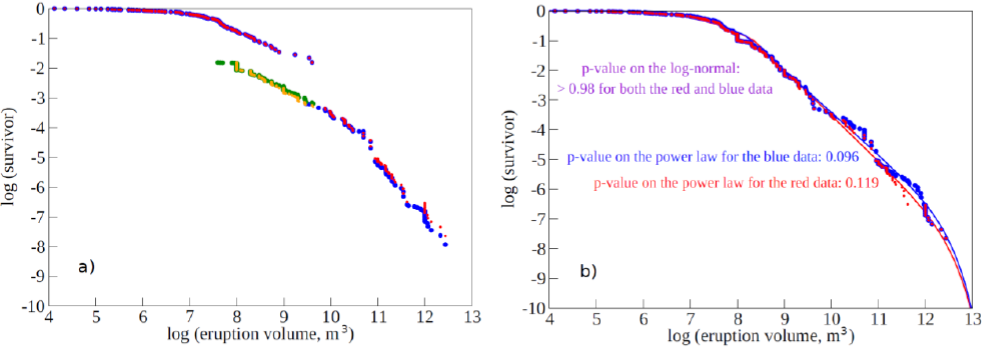Global Volume Distribution for Subaerial Volcanism on Earth

Papale P., W. Marzocchi, D. Garg (2021).
Journal of Geophysical Research – Solid Earth, https://doi.org/10.1029/2021JB021763.
Plain Language Summary
The occurrence of volcanic eruptions over the Earth follows apparently complex patterns: while the vast majority of the eruptions are relatively small in size, here and there less frequent large eruptions appear, and even less frequently, cataclysmic eruptions take place menacing vast regions up to the global Earth. Summed up with relatively quick deterioration of the information from the geologic record, especially for small to medium size eruptions, such apparently irregular trends have largely limited our understanding and forecasting capabilities. New databases of volcanic eruptions, and new statistical analyses, allow us to determine the size distribution of volcanic eruptions worldwide, from the smallest lava flows to the largest explosive eruptions known to have occurred on Earth. We find that above a relatively small eruption volume threshold all eruptions distribute according to what is called a power law, which is also known to describe other natural phenomena such as earthquakes, wild fires, and many others. The mechanisms subtending the generation of a power law distribution for the global continental volcanism are not immediately clear. However, as for several other similarly distributed phenomena, a relevant implication may be the impossibility to predict the size of an impending eruption, with severe consequences for volcanic risk emergency management.


Devi effettuare l'accesso per postare un commento.